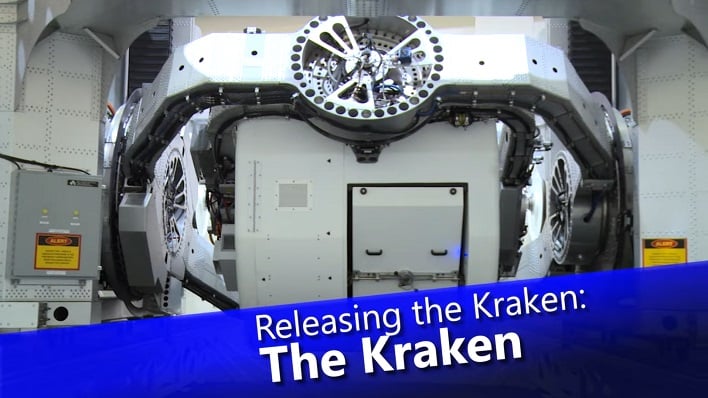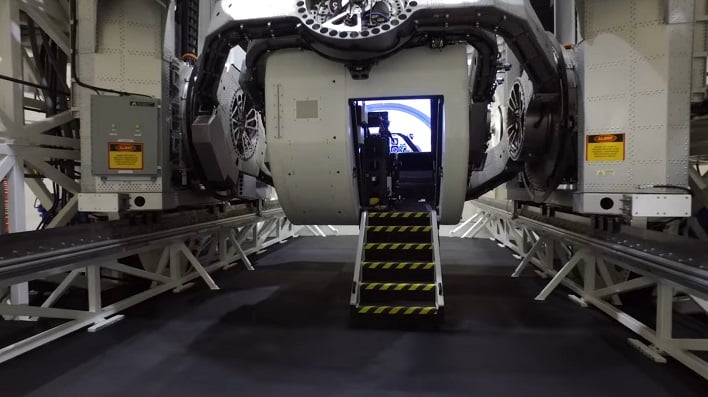NASA Releases The Navy's Kraken On Astronauts To Rattle Their Brains And Prep For Space

NASA scientists are hoping to build strategies to help astronauts who suffer from motion sickness after being launched into space, by utilizing the U.S. Navy's Kraken. Kraken is a 50-foot-long, 100-ton platform, at the Wright-Patterson Air Force Base in Ohio, that can replicate different types of flight dynamics that disorient occupants through sudden shifts in roll, pitch, and yaw.
"Shortly after liftoff in the space shuttle, I felt like I was on a merry-go-round as my body hunted for what was up, down, left, and right," explained NASA astronaut Douglas Wheelock. "Crew must prepare for the confusion that they will likely undergo during these gravitational transitions."
It isn't just after liftoff from Earth that can cause issues with motion sickness for astronauts. Many report feeling dizzy, lightheaded, nauseated, and off-balance once they return home as well. The symptoms can persist for several days, and are often referred to as getting their "land legs" back.
NASA hopes to use an upcoming study of 24 active-duty service members who dare to take a 60-minute ride in the Kraken. The beast of a machine will spin them at accelerations reaching three times the force of gravity in order to simulate what astronauts experience when they return home from space.
"The first time I saw the Kraken in person, I was impressed by how large and agile the machine is," remarked Laura Bollweg, who manages astronaut health research at NASA's Johnson Space Center in Houston, Texas. "With the ability to move six directions on its axis, the device can simulate complex flight scenarios that are difficult to recreate on Earth, including landing scenarios that could induce vertigo and nausea."
During the study, 12 volunteers will perform prescribed head turns and tilts while wearing video goggles that track their head and eye movements, while the remaining 12 sit out the head movement protocols. The technology will record things such as how many times a participant blinks, or how their heart rate changes. Volunteers will also be asked a series of questions about being disoriented or having feelings of nausea.

Michael Shubert, a neurophysiologist at Johns Hopkins University, says astronauts suggest performing slight head movements has helped them to recover a sense of balance faster. He added, "Tests with the Kraken will allow us to rigorously determine what head movements, if any, help astronauts to quickly recover their sense of balance."
If the study proves successful for astronauts, there is hope that it will also be able to help patients here on Earth, like those who have had tumors removed from their inner ears. These patients often suffer from dizzy spells and vertigo. Shubert says by confirming head movements help patients in the Kraken study to overcome the same type of symptoms, it "will allow NASA and the Navy to play a vital role in bringing a new set of therapies to the public."

